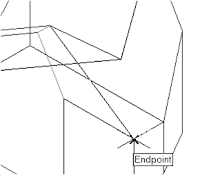Abstract:
Toyota as an automotive market leader in Indonesia with 30% market share, always strives to do Kaizen “continuous improvement” on each of their activity. One of the realization kaizen in manufacturing side which becomes Proactive Maintenance Method to make no breakdown machine on production time is zero breakdown activity. This activity is nearly based on TPM concepts but many modification strategies have conduct to reach its goal. First thing that revolutionary is Mieruka concept, how to know the process and machine problem using coverless strategy.
To get commitment from production side who become the owner of machine,
PM-
Production Maintenance which emphasized on qualified production member knowledge transfer to others and
SM-
Self Maintenance which move to find the root cause of problem both productions, maintenance and engineering, also present. Senmonginou (Special skill Training) is a method to fulfill maintenance & production skill to solve machine fault and abnormality.
Others
new strategies that become proactive maintenance method will described clearly in this paper. Examples of implementation programs in TMMIN (Toyota Motor Manufacturing Indonesia) will be presented.
Proactive Maintenance Concepts
Based on the first terminology of proactive maintenance, it is stated that proactive maintenance is a maintenance method that commissions corrective actions aimed at the sources of failure. It is proposed to extend the life of mechanical machinery as opposed to
1) making repairs when often nothing is broken,
2) accommodating failure as routine and normal, and
3) preempting crisis failure maintenance
But, when we generally discuss about proactive maintenance, broader aspect could be included just like when we have a program that assists in scheduling preventive maintenance at the recommended intervals and monitors when those tasks are performed, it becomes proactive. We are also proactive when we repair and replace components before they are getting failure. Training plant operators is also programmed to recognize components when they are showing signs of failure and having procedures to report those are also proactive2.
TPM as Windows to Reach Zero Breakdowns
One of the TPM (
Total Productive Maintenance) objectives is reducing cost. An overall production cost, including how cost-saving happened by finding the root causes of machine worn out and failure then implement a precise countermeasure is also the proactive one. If we study in a short time to reach zero breakdowns, preventive maintenance cannot eliminate breakdown alone.
According to the principles of reliability engineering, the causes of equipment change with the passage of time refer to bathtub curve (figure 1) . The causes of early period failure are design and manufacturing errors. To combat them, the engineering design must conduct test runs at the earliest stage. Furthermore, maintainability improvement should be pursued to discover and treat weakness design and manufacturing. Accidental failures are caused primarily by operation errors, so the most effective countermeasure is to ensure that operators use equipment properly.
Wear-out failures are due to the limited natural life span of equipment parts. Equipment life can be extended by preventive maintenance and by maintainability improvement (through changes in design). This will reduce the wear-out failure rate.
Figure 1. Bathtub curve
Maintenance prevention is an effective countermeasure for all three types of breakdown. A maintenance-free equipment design must be incorporated at the planning/design stage to prevent early period, accidental, and wear-out failures.
Depicted on that illustration, preventive maintenance alone cannot eliminate breakdowns. All departments cooperated to do TPM, and maintenance as well as engineering and production must be involved in the breakdowns elimination. Based on effort to eliminate failures, it could be categorized into five countermeasures:
1. Maintaining well-regulated basic conditions (cleaning, lubricating, and tightening)
2. Adhering to proper operating procedures
3. Restoring deterioration
4. Improving weakness in design
5. Improving operation and maintenance skills
Figure 2 illustrates the relation between these five countermeasures. As this figure illustrates, breakdowns can be eliminated by carrying out simple procedures in a simple manner and its
aim to be zero breakdown. In another words, activity done to reach zero breakdown which involving all departments to gain no breakdown machine is derivative from TPM activity. And this activity also based on pillars of TPM which prior on jishu hozen or autonomous maintenance, kobetsu kaizen or conduct continuous improvement, planned maintenance, honshitsu hozen or quality maintenance and training maintenance which also motivate to bring strategic and systematic ways to step ahead towards breakdown elimination. This concept could be mathematic as:
......... Zero Breakdown Machine (second)…………. (eq.1)
It means that when TPM was running well with third stage implementation; preparation, implementation and stabilization on its company system especially on its maintenance side the ideal machine condition could be achieved. And the business supply chain also affected both on its upper and downstream.
On the next page, implementation of zero breakdowns activities in TMMIN (Toyota Motor Manufacturing Indonesia) will be described and illustrated, the method and sampling taken from its engine plant. We refer to TMMIN Ltd. Because this company has been applied the very well known methods: Total Productive Maintenance to achieve zero breakdowns in their plant. However, The TPM here is the unique one because they also implemented Kaizen and Mieruka system so we called it as “Proactive Maintenance”, a new approach to Maintenance Word Methods.
 |
Figure 2. Relationships between breakdown countermeasures
........................... 01 ................................
|











